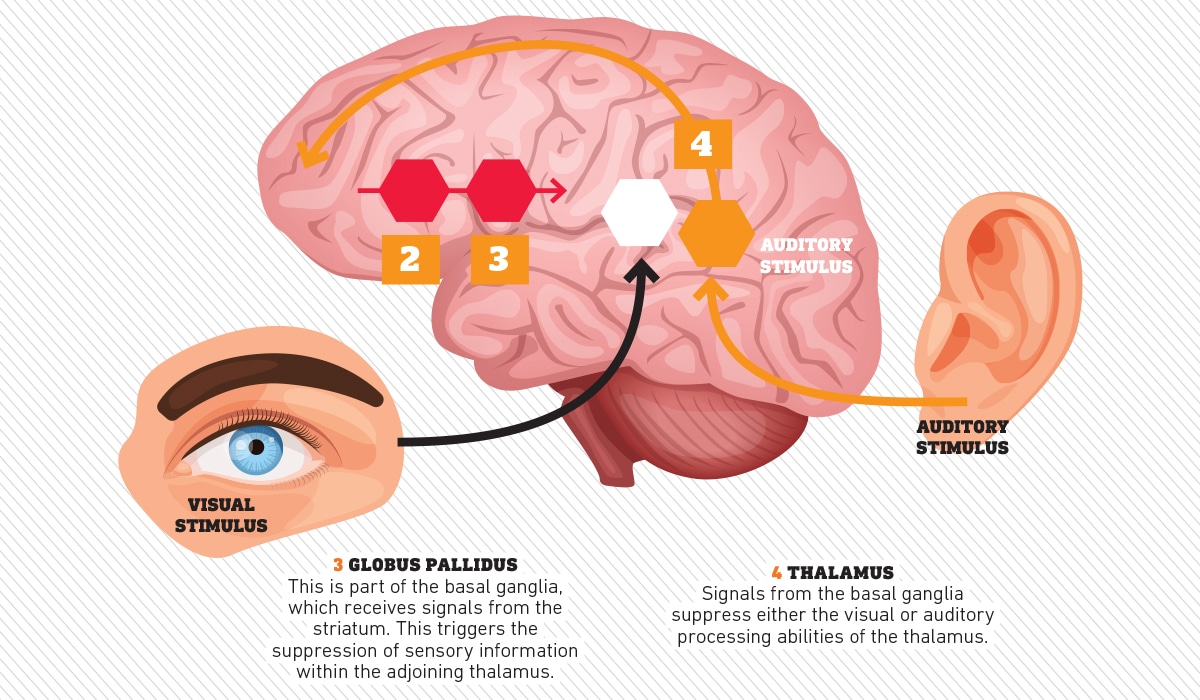How your brain tunes out the distracting sights and sounds of the outside world.
The world is full of sensory stimulation and sometimes your brain needs to shut some of it out to tackle the task at hand.Whether you’re reading a book on a busy train or making a phone call while walking down a bustling street, your brain seems able to zone in and tune out the rest of the world.
Although this ability has no formal title, scientists have attributed its origins to one specific region of the brain: the prefrontal cortex. This complex portion of the brain is responsible for “higher-order” cognitive functions such as decision making and evaluative thinking. However, it doesn’t directly receive sensory information from sensory organs. That responsibility lies with an egg-shaped structure in the centre of the called the thalamus.
The thalamus is around 5.7 centimetres in length.
Neuroscientists have long thought that a connection between the two regions holds the answer to why people can focus on one sensory stimulus, such as sight while reading a book, while simultaneously tuning out background noise. In 2019, researchers at MIT in the USA finally made the connection through a series of experiments in which mice were trained to switch their attention between sight and sound. They found that two parallel neural pathways acted like a circuit switch in the thalamus. When the prefrontal cortex was working on a visual task, the circuit would suppress the ability of the thalamus to process sound, and vice versa.

Bursts Of Focus
In 2023 researchers at the University of Pennsylvania in the USA identified a set of neurons that function as the brain’s traffic controllers for distractions. Known as “visual-movement” neurons, these cells are found in the lateral prefrontal cortex and are dedicated to keeping focus when the brain is faced with a task, shielding it from visual distractions. During animal trials, when faced with “attentional conflict”, these neurons showed bursts of activity that the researchers called beta bursts. When these occurred before the subject was shown a visual stimulus while completing a task they were more likely to ignore it. Similarly, when visual stimuli were present while the beta bursts were weak, subjects were more likely to pay attention to them.


By: Scott Dutfield
Imagery: Getty/Alamy







